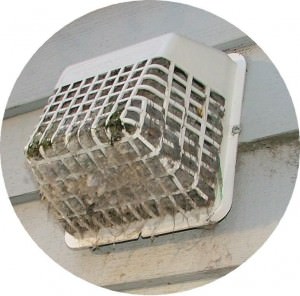Dryer venting—-how much easier can it get than connecting a bunch of pipe together and running it outdoors?

Just like so many other components of a home—the simple things sometimes require “precise” installation to be proper—-to be safe—and therefore perhaps not so simple after all.
Clothes dryers are one of the leading causes of household fires.
According to the Consumer Product Safety Commission, in 1998, there were 15,600 fires, which resulted in 20 deaths and 370 injuries related to clothes dryers.
Plastic vent pipes, pipes clogged with lint and the clogged lint collectors in the dryer itself all played a part in the risk of these fires.
Did you know that unless “specifically” stated otherwise by the manufacturer, the maximum length of the vent (after the transition from the dryer itself to the vent duct in the wall) is 25 feet? Not really very long. Then, for every 90 degree bend, we must subtract 5 feet, and 2.5 feet for any 45 degree bend, from that total length. A dryer vent that starts at the wall behind the dryer and goes up to the attic (or down to the crawl space) is going to have at least 2 elbows. Thus, the maximum length would be 15 feet. Depending on where the laundry is in the home, this is usually enough to allow proper venting of the dryer. And, as I said—-this can vary with manufacturer. If your area doens’t follow any codes—-its still a good idea to follow these guidelines.
When these “maximum” lengths are reached, the building codes allow installation of Booster Fans to compensate for the extra length. Booster fans have to be rated for such use and must be installed with access within the same room the dryer is in. If this is not possible (for example if it is located in an accessible attic) a label must be prominently displayed in the room where the dryer is, that tells everyone that there is a booster fan installed.
The one in this picture is a Kanalflakt and can push lint through longer pipes that have more elbows.

It is designed to automatically turn on whenever the dryer turns on (via an atmospheric pressure switch). It is, however, another “obstruction” in the dryer vent system that must be kept operational. Failure to turn on for example could result in clogging of the fan and/or the extra long length of pipe. It also helps if the vent pipe is connected to the fan itself. In my opinion these booster fans are a choice of last resort and the result of poor home design.

As one can see in the picture above, this one is disconnected and has been venting lint and moisture into the ceiling space above the laundry. In this case the vent pipe is completely blocked with lint. A dryer with a plugged vent pipe essentially vents back into the living space. This allows for an indoor weather prediction for the possibility of rain.
Another important thing to remember about clogged dryer vents is that it can increase drying time astronomically and thus increases energy costs. Of course this also increases the risk of dryer fires.
In my opinion it would have been better to figure out a way to vent this dryer outdoors without requiring a booster. Where these are becoming common is in multistory buildings where maintaining vents 3 or four stories off the ground is problematic. It is easier to take them all to the roof where they can be more easily maintained. With multistory buildings I am not sure there is any easy way to deal with venting the dryer.
***
Charles Buell, Seattle Home Inspector
If you enjoyed this post, and would like to get notices of new posts to my blog, please subscribe via email in the little box to the right. I promise NO spamming of your email
Leave a Reply